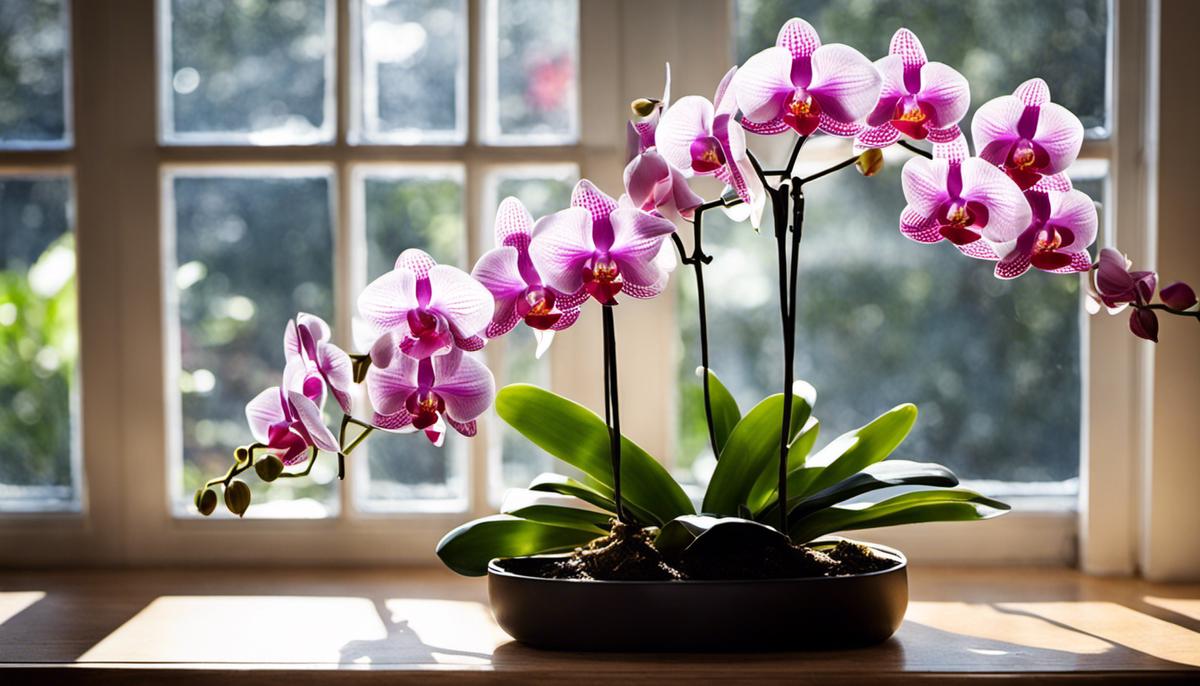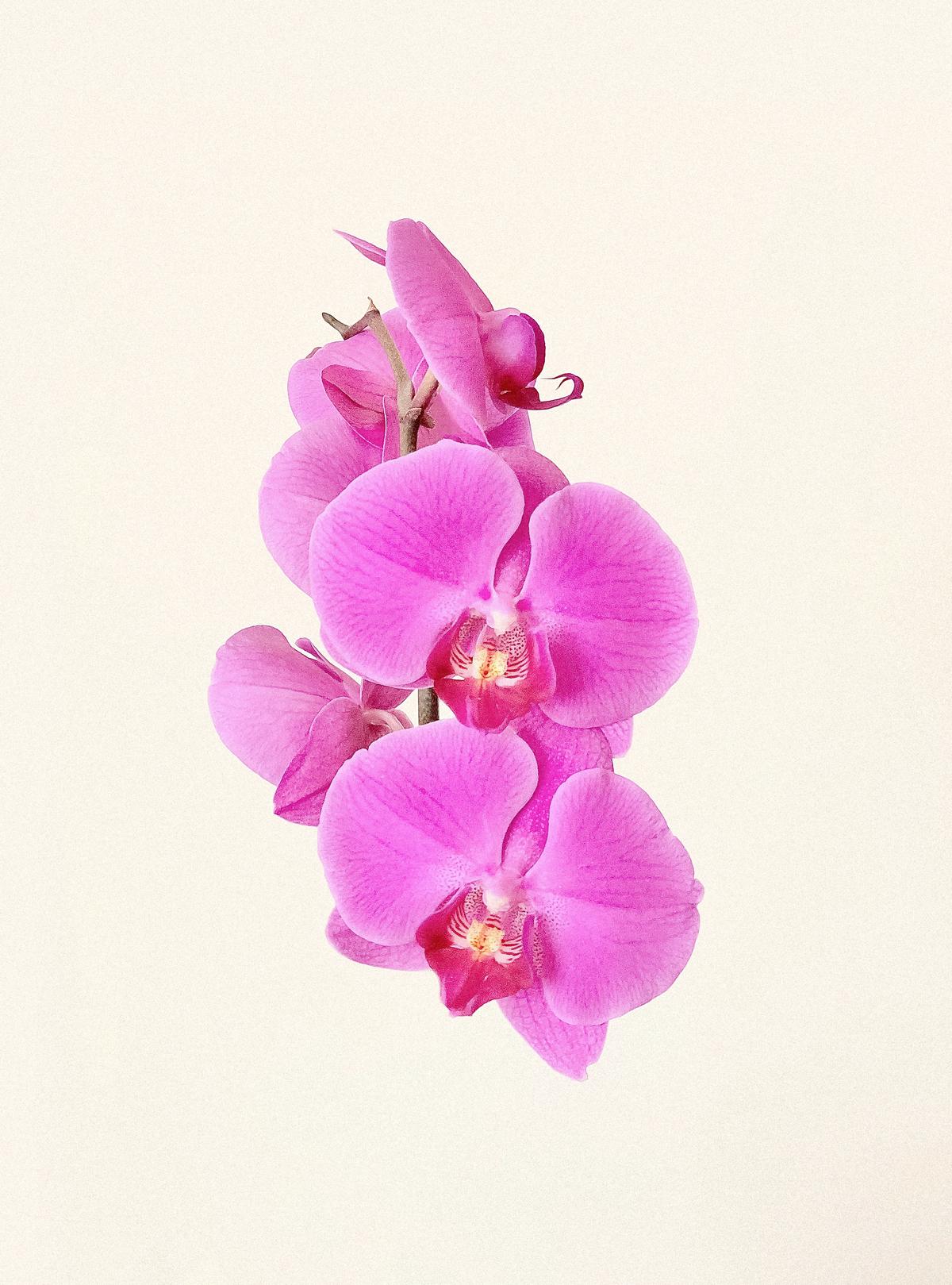Orchid Care Indoors: A Simple Guide

Growing an indoor orchid can be a rewarding endeavor. These exotic plants, with their intricate blooms and lush leaves, can transform any interior into a tropical oasis. However, to truly thrive, orchids require special care and consideration regarding their placement, lighting, watering, and feeding needs. This includes understanding the ideal location for these beauties within your home, the level of illumination they require, and the unique watering and feeding habits necessary for their growth. Furthermore, once these initial requirements are met, maintaining the overall health of your orchid through appropriate repotting, pruning, and disease diagnosis becomes crucial for a prolonged lifespan of the plant. Embrace an immersive journey into the fascinating world of indoor orchids and uncover the secrets to nurturing and caring for these exquisite plants.
Orchid Placement and Lighting
The Ultimate Spot for Orchid Growth: A Guide to Indoor Success
Starting out as an orchid enthusiast can be quite daunting, given the infamous reputation these lovely plants have for being finicky in their growth conditions. While this might sound like a challenge, the great news is once these fascinating flora find their perfect spot, they’ll reward you with robust growth and a spectacular show of blooms, making every effort worth it!
Where exactly should these indoor orchids be placed for optimal growth? Today, we’re diving straight into the heart of that query. Knowing the factors determining the best location for your orchid is instrumental. Three fundamental components come into play: light, temperature, and humidity.
Firstly, let’s talk about light. Orchids inherently thrive in the bright, yet diffused light similar to their natural rainforest habitat. Light that’s too direct can scorch the leaves, while too little can starve your plant. So, consider a spot near a window with an east or west-facing exposure. The diffused morning light from an east-facing window works wonders, and the afternoon light from a west-facing window is equally great if it’s not too hot. South-facing windows can work as well, given a sheer curtain is used to filter the light.
Temperature is the second critical consideration. The type of orchid dictates the preferable temperature range, but a typical “home-friendly” orchid like the Phalaenopsis enjoys 65-75 degrees Fahrenheit during the day, and, at night, a fall in temperature by about 10 degrees initiates flowering. Placing your orchid near a window but not too close could strike the right balance. Avoid spots near radiators, vents, and drafts.
Last but not least, humidity. Orchids love higher humidity levels of around 40-60%. This can be a challenge, especially in colder months, when indoor air tends to be dry. A location like a well-lit bathroom that is often humid from showers can work wonders, provided the temperatures are right. Alternatively, employing a humidity tray under your orchid pot or using a humidifier can help maintain its tropical bliss.
Once you find the perfect spot, don’t be too hasty moving your orchid around. These beautiful flora are quite sensitive to change and enjoy stability. So, take some time to understand your home’s microclimates, play around a bit until you find that sweet spot, and then sit back and watch your prize orchid thrive.
Remember, as a proud orchid caregiver, understanding the needs of your plant and working to meet them within your home setting is the foremost strategy. The joy of seeing those magnificent blooms unfold in the very midst of your living space makes it all a truly rewarding journey. Happy orchid growing!

Watering and Feeding Orchids
Now that we’ve established the essential environment for your indoor orchids for optimal growth, it’s time to plunge into another crucial aspect: the watering and feeding schedule. Orchids are not your typical house plants, and while they can be slightly finicky, adhering to a proper watering and feeding protocol will ensure they bloom beautifully.
An essential point to remember when watering orchids is “less is often more.” Overwatering is one of the quickest routes to the demise of these delicate plants.
Typically, for most orchids, a soaking once a week is sufficient. But keep in mind, the frequency may vary based on several factors such as the type of orchid, your home’s specific climate, the season, and even the potting medium used. For instance, a Phalaenopsis orchid growing in high-grade bark may need water twice a week during warmer months and less so in cooler ones.
A simplified practice known as the ‘ice cube method’ might be useful for orchid enthusiasts who find the watering regimen intimidating. Place one or two ice cubes on top of the potting medium, depending on the orchid’s size. The ice cube’s slow meltdown ensures that the orchid receives moisture without getting excessively waterlogged.
Remember, the goal is to maintain a moist but not soggy potting medium. The easiest way to check water requirement is by poking your finger into the medium. If the top one inch feels dry, it’s a signal that your orchid is ready for some hydration.
Now, let’s transition to orchid nutrition! Indoors, where they cannot source their own food like their counterparts in the wild, orchids rely on us to meet their nutritional needs.
Feeding your indoor orchids is as essential as watering, stimulating their growth and ensuring vibrant blooms. Since orchid roots are not buried deep in the soil, they can’t absorb nutrients in the usual way. Orchids should be fed with a 20-20-20 fertilizer or specifically designed orchid food. They prefer their nutrients in weak concentrations, so ensure to dilute the fertilizer according to the instructions.
During the active growing season (spring and summer), a monthly feeding regimen will suffice. However, in the dormant times (fall and winter), it’s best to limit feeding to once every two months. Be certain to water the plant thoroughly before applying any fertilizer to prevent burning the roots.
With these watering and feeding practices in place, rest assured, your indoor orchids are well on their way to showcase a splendid spectacle of blooms. Orchid care might require a bit of effort, but the reward your orchids provide in return is well worth it. Rich, vibrant, and stunningly beautiful blossoms right within your living room are beyond compare. So, gear up, embrace the challenge, and revel in the captivating world of indoor orchid cultivation!

Photo by zoltantasi on Unsplash
Maintaining Orchid Health
Caring for those spectacular indoor orchids extends beyond adjusting the light, temperature, and humidity. A less commonly discussed but equally important subject is the delicate art of watering and feeding.
The health and vibrancy of indoor orchids are deeply dependent on proper watering and nourishment. Watering has to be executed with precision because overwatering indoor orchids can lead to root rot, a common orchid ailment. The watering frequency should be determined by factors like the type of orchid, potting medium, room temperature, and humidity levels. No two orchids are alike and understanding your specific orchid’s needs will ensure it thrives.
A popular watering technique among orchid enthusiasts is the “ice cube method”. This entails placing an ice cube in the orchid pot once a week, allowing for slow, controlled hydration as the ice cube melts. This method mimics the slow drip of rainwater in their natural habitats and helps avoid overwatering. Nevertheless, also make a habit of checking the moisture level of the orchid’s potting medium before watering. If it’s still moist from the previous watering, it’s usually best to wait.
Providing the right kind of nutrition for indoor orchids is also crucial as they do not feed on soil like the majority of houseplants. Orchids, in the wild, depend on decomposed leaves, bird droppings, and rainwater for nutrition. Thus, indoor orchids are reliant on their human caregivers for feeding.
Orchids usually do well on a diet of balanced orchid fertilizer, often a 20-20-20 mix of nitrogen, phosphate, and potash. It’s important to dilute the fertilizer, typically using a quarter to half of the recommended amount. Orchids are sensitive to overfeeding and grow best when fed weakly but frequently.
Feeding frequency often changes throughout the year. During active growth periods, typically in the warmer months, feeding should be increased. However, in the dormant season or colder months, the frequency should be reduced to once a month to avoid overfeeding.
Bear in mind the essential step of thoroughly watering your orchid before applying fertilizer. This shields the roots from being burnt by the nutrients. It is good to remember that orchids respond well to consistency. Once you figure out what your orchid likes, stick to it, and your reward will be vibrant, spectacular blooms brightening up your indoor space.
In the end, the goal is to create an environment that mimics the orchid’s natural habitat as closely as possible. With love, patience, and a regular watering and feeding schedule, your indoor orchid will thrive and may even surprise you with its resilience and beauty! So, delve into this exciting aspect of orchid care and revel in the delightful growth and bloom of your indoor beauties.

The care and love devoted to an indoor orchid can yield remarkable results, leading to vibrant blooms that are a sight to behold. The process encompasses placing your plant in an environment that provides the right amount of sunlight, combined with a watering and feeding routine carefully tailored to the demands of the species. Lastly, don’t forget that a major part of plant care is knowing how to maintain its health beyond these basic needs. This involves regularly checking your plant for any diseases, timely repotting, and proper pruning. Therefore, with a little effort and patience, you can help your indoor orchid thrive, bringing beauty and a touch of the exotic into your living space for years to come.



